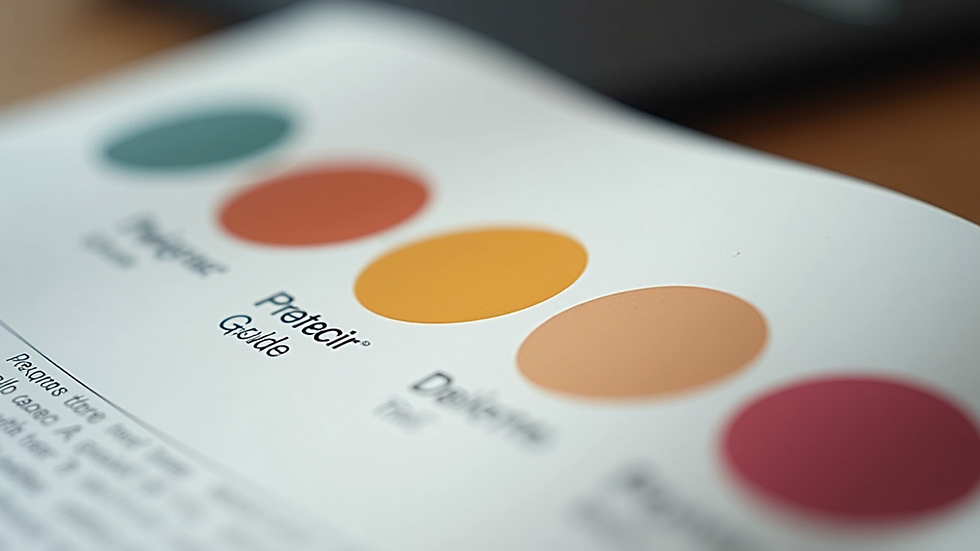Mastering the Basics of Web Design
- Keri Blumer

- Aug 15
- 4 min read
Creating a website can feel like a huge mountain to climb. But guess what? It doesn’t have to be that way. When you master the web design basics, you unlock the power to build a site that looks great, works smoothly, and connects with your audience. Whether you’re launching a new business or refreshing your online presence, understanding these fundamentals is your first step to success.
Let’s dive in and explore how you can make your website stand out without the headache.
Understanding the Web Design Basics: What You Need to Know
Web design is more than just making things look pretty. It’s about creating an experience that visitors enjoy and find easy to navigate. Here’s what you need to focus on:
Layout and Structure: Think of your website like a house. You want rooms (pages) that flow logically and are easy to find. A clean, organized layout helps visitors find what they need fast.
Color and Typography: Colors set the mood. Fonts communicate your brand’s personality. Use colors that reflect your brand and fonts that are easy to read.
Responsive Design: More people browse on phones and tablets than ever before. Your site must look great on all devices.
Loading Speed: Slow websites lose visitors. Optimize images and code to keep things zippy.
User Experience (UX): Make sure buttons, links, and menus are intuitive. Visitors should never feel lost.
By mastering these basics, you create a website that’s not just beautiful but functional and user-friendly.

Essential Web Design Basics: Tools and Techniques to Get Started
Ready to roll up your sleeves? Here are some practical tips and tools to help you master the essentials:
Choose the Right Platform
Platforms like WordPress, Wix, or Squarespace make building websites easier. They offer templates and drag-and-drop features that save time.
Pick a Color Scheme
Use tools like Coolors or Adobe Color to find palettes that work well together. Stick to 2-3 main colors to keep things consistent.
Select Fonts Wisely
Google Fonts offers tons of free, web-friendly fonts. Pair a bold font for headings with a simple font for body text.
Plan Your Navigation
Keep menus simple. Use clear labels like “Home,” “About,” “Services,” and “Contact.” Avoid clutter.
Optimize Images
Large images slow down your site. Use tools like TinyPNG or ImageOptim to compress images without losing quality.
Test Responsiveness
Preview your site on different devices. Tools like BrowserStack or simply resizing your browser window can help.
Use White Space
Don’t cram everything together. White space improves readability and makes your site look professional.
By applying these techniques, you’ll build a solid foundation for your website that visitors will love.

How Much Does It Cost to Have a Web Designer?
You might be wondering, “Should I do this myself or hire a pro?” The answer depends on your budget, skills, and goals. Here’s a quick breakdown of what to expect when hiring a web designer:
Basic Website: $500 - $2,000
Great for small businesses needing a simple, clean site with a few pages.
Custom Design and Features: $2,000 - $10,000
Includes unique designs, e-commerce, booking systems, or other advanced features.
Ongoing Maintenance and Updates: $50 - $200 per month
Keeping your site secure, updated, and fresh.
Remember, investing in professional web design services can save you time and headaches. A skilled designer knows how to create a site that not only looks amazing but also drives results.
If budget is tight, start with a DIY platform and upgrade later. But if you want to make a big splash online, partnering with experts is a smart move.

Making Your Website Work for You: Tips to Boost Engagement
A beautiful website is just the start. You want visitors to stick around, explore, and take action. Here’s how to make that happen:
Clear Calls to Action (CTAs)
Tell visitors exactly what you want them to do. Use buttons like “Get a Quote,” “Shop Now,” or “Contact Us.”
Fast Loading Times
Aim for under 3 seconds. Use caching plugins and optimize your hosting.
SEO Basics
Use keywords naturally in your content. Write descriptive titles and meta descriptions.
Social Proof
Add testimonials, reviews, or client logos to build trust.
Regular Updates
Keep your content fresh with blogs, news, or new products.
Easy Contact Options
Include phone numbers, email, and contact forms that are simple to use.
By focusing on these areas, your website becomes a powerful tool to grow your business and connect with customers.
Taking the Next Step: How to Keep Improving Your Website
Web design is an ongoing journey. Trends change, technology evolves, and your business grows. Here’s how to stay ahead:
Monitor Analytics
Use Google Analytics to see what’s working and what’s not.
Gather Feedback
Ask visitors or customers for their thoughts on your site.
Test and Tweak
Try different headlines, images, or CTAs to see what performs best.
Stay Updated
Follow web design blogs and tutorials to learn new skills.
Consider Professional Help
When you’re ready, explore advanced features or redesigns with expert web design services.
Remember, your website is your digital storefront. Keep it fresh, user-friendly, and aligned with your brand to make the best impression.
Mastering the web design basics is within your reach. With the right approach, tools, and mindset, you can create a website that not only looks fantastic but also drives your business forward. Ready to make your mark online? Let’s get started!




Comments